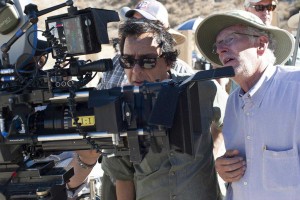
The film took Chopra almost four years to write. The screenplay started as an adaptation of an Indian film that the writer-director had done 20 years previously, but in the course of the writing, the story took on a direction of its own. As an auteur, Chopra visualizes the film as he is writing.
“When I write, I don’t write on paper, I write with visuals,” shared Chopra. “For example, the visual of the white stallion running out of the ranch is a visual that came to me. It’s not the words that express that visual, it’s the visual that comes to me first and then I express it with words.”
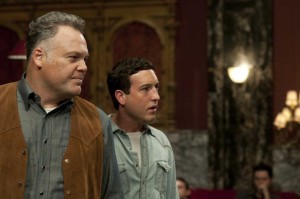
“Tom Stern is the brother I found. The reason I went to Tom was because of Mystic River and everything he’s done since then with Clint Eastwood. I loved the way he shot Mystic River,” said Chopra. “The great thing about Tom is that he’s an intellectual. He could define in words what I felt instinctively. Because I have this visual sense, he respected that.”
To impart his vision, Chopra talked extensively with Stern. The westerns of Sergio Leone influenced the look. The director was also seeking images with elements such as fire, water, earth and wind. “There were times that I needed shadows,” explained Chopra. “There were car headlights lighting up the whole scene. I needed these headlights and shadows. Fritz Lange used to do that. We, of course, watched those films. Tom was totally on board with the vision.”
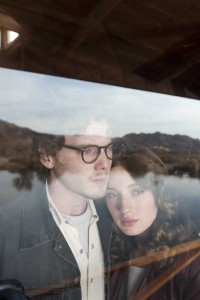 Chopra noted how he and Stern were very much in sync with each other. When the lights turned on for one scene the director asked if the cinematographer was ready. Stern said yes, but Chopra hesitated and asked again, “Are you really ready?” Stern said, “No” and adjusted the lighting to what they had discussed.
Chopra noted how he and Stern were very much in sync with each other. When the lights turned on for one scene the director asked if the cinematographer was ready. Stern said yes, but Chopra hesitated and asked again, “Are you really ready?” Stern said, “No” and adjusted the lighting to what they had discussed.
Chopra thought his camera operator Peter Rosenfeld and focus puller Bill Coe really took his film to the next level. They were able to capture mise-en-scène moments by choreographing the movement of the camera with the performances of the actors.
“There were times when there was a shot that’s happening and the actor is performing and Peter caught my eye and I made a signal and suddenly the camera moves and goes somewhere else,” explained Chopra. “Peter just moved his camera so smoothly and Bill followed with the focus, which is great.”
Before shooting in California, Chopra traveled for almost six months throughout the Southwest to know how to recreate the look of the border regions. The production ended up shooting in locations that included Death Valley, the town of Victorville and the railroad tracks near Victorville. “Because I had seen all that, my eye was trained to pick and choose the exact frame in California that I had seen Arizona, New Mexico and Texas,” revealed Chopra.
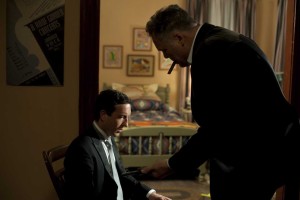 The ranch on the lake was constructed near Acton, just north of Los Angeles. “Toby Corbett, our production designer, made that lake. We actually dug a hole, added water and made the ranch,” explained Chopra. “The crazy thing, while I was shooting I had the vision of the horse running out.” Chopra asked the production designer if he could have a horse run out of the ranch house. “He said, ‘You’ve got to tell me now because I’ll have to put extra strength in the bridge.’ I said, ‘You might as well do it because I have a feeling a horse is going to run there tomorrow night.’ So that was amazing.”
The ranch on the lake was constructed near Acton, just north of Los Angeles. “Toby Corbett, our production designer, made that lake. We actually dug a hole, added water and made the ranch,” explained Chopra. “The crazy thing, while I was shooting I had the vision of the horse running out.” Chopra asked the production designer if he could have a horse run out of the ranch house. “He said, ‘You’ve got to tell me now because I’ll have to put extra strength in the bridge.’ I said, ‘You might as well do it because I have a feeling a horse is going to run there tomorrow night.’ So that was amazing.”
One week before the shoot, propmaster Guillaume DeLouche questioned the director as to what kind of fish was needed for a scene where the older brother Buddy (Chris Marquette) bakes what is described as “Mama’s recipe” in the script. “I told him, I am not from this culture. I am from India. How do I know Mama’s recipe? You know more than me,” stated Chopra. “The next day when I went to the set there were five or six kinds of fish, cooked and on the table. I had no idea what it was. Visually, I picked one… this is Mama’s recipe.”
Although editor Todd Miller was from Los Angeles, Chopra edited the film in India. Walter Murch came in as a consultant during post and finessed the final cut with Chopra back in Los Angeles. Chopra admitted he learned a lot working with the acclaimed editor.
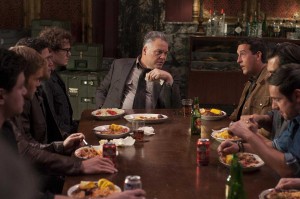 “Walter and me, again, I felt like a brother,” shared Chopra. “We would stand behind the edit machine, while Todd Miller did the edit. Walter and I would look at each other. We didn’t even have to talk about it. I’d say, ‘Five frames.’ And Walter said, ‘No, I think it’s six.’ I said, ‘Okay, we’ll settle at five and a half.’ So that was our joke. Walter and I stood there and could see each frame.”
“Walter and me, again, I felt like a brother,” shared Chopra. “We would stand behind the edit machine, while Todd Miller did the edit. Walter and I would look at each other. We didn’t even have to talk about it. I’d say, ‘Five frames.’ And Walter said, ‘No, I think it’s six.’ I said, ‘Okay, we’ll settle at five and a half.’ So that was our joke. Walter and I stood there and could see each frame.”
Costume designer Mary Vogt is credited on mega films such as the Men in Black series. She had worked with actor Vincent D’Onofrio, who pays the manipulative villain, Julius Hench, in Broken Horses. Chopra chose crew members like Vogt not only by studying the work they had done on other films, but also by his reaction to them upon meeting.
“The critical thing is when I meet somebody, do I like them when I meet them? Do they like me when I meet them? For me the critical thing is the relationship. You know in the first five or six minutes whether you like the person you are talking to,” revealed Chopra. “When you are talking to a crew, if you really like somebody, you can do great work with them. I really liked Tom Stern and Toby Corbett and Walter Murch, so I did a great job working with them. If I didn’t like my crew so much, it would be very difficult.”
Post sound was done with Aaron Glascock and Curt Schulkey acting as supervising sound editors and Greg Watkins rerecording the mix at Warner Brothers. In a similar way to how he visualizes the picture, Chopra hears the sound while he is writing.
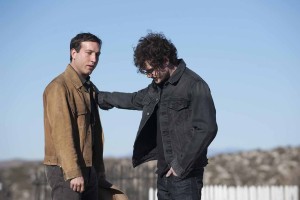 “I write my script with sound,” Chopra explained. “Right in the beginning, the wind and that first bullet and that target falling down, it was all based on wind and sound. I work a lot with that. I hope people see the film on the big screen because we worked almost eight, nine months on the sound. It’s critical that people hear those sounds.”
“I write my script with sound,” Chopra explained. “Right in the beginning, the wind and that first bullet and that target falling down, it was all based on wind and sound. I work a lot with that. I hope people see the film on the big screen because we worked almost eight, nine months on the sound. It’s critical that people hear those sounds.”
Chopra, who makes musicals in India, is very music orientated. John Debney composed the score, which was recorded in Macedonia. The director also had his Indian composer, Shantanu Moitra, come to America to collaborate with Debney. “That was an amazing collaboration between an American composer and an Indian composer,” noted Chopra. “That is why the score is what it is. It’s universal. It has elements of India in terms of music.”
Chopra credits the success of the production to his crew. “It’s the crew that makes the movie. I believe that very strongly. I was very lucky to have this absolutely wonderful crew. That’s one of the reasons I will be coming back to this country to make another movie. I had a great time working with that crew.”
Chopra concluded with a quote from Akira Kurosawa that he has in his office in India, “Filmmaking is a cooperative workforce based on individual human talent.”





